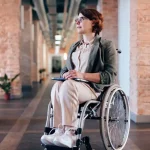Info about swallowing problems in the elderly.
I recently read an article about a man who had a stroke and suffered from swallowing problems. He had a tube called a “peg” put in his stomach to intake liquid nutrition instead of swallowing by mouth.
He lost weight. He wanted to eat a regular diet in the usual way again. However, his weak and awkward swallowing made this seem impossible. He really missed his chicken-fried steak.
Many caregivers combat swallowing problems in the elderly. It is a common problem among those over 60 years of age. Both of our elderly mothers had issues with swallowing.
One had dry mouth and swallowing problems after receiving chemotherapy for cancer. The other had swallowing problems as a side-effect of medications, Parkinson’s, and overall muscle weakness due to age.
Difficulty in swallowing is more than just inconvenient. It can impact the person by affecting their diet, even their willingness to eat, and thus cause weight loss.
It can impact their intake of fluids, possibly causing dehydration, blood pressure problems, and urinary tract problems.
Swallowing difficulties can cause one to choke and aspirate food particles or liquids into the lungs. This is called aspiration pneumonia, a severe condition that can be fatal.
If you or your loved one has difficulty chewing and swallowing and often coughs or chokes while eating or drinking, then don’t ignore those signs.
It could be dysphagia, the medical term for difficulty in swallowing. You or your loved one should be seen by a doctor and be referred to a specialist for therapy which helps relieve and solve the problem.
That specialist is usually a Speech-Language Pathologist or an Occupational Therapist.
I recently read about the effectiveness of a painless, non-invasive treatment called the VitalStim Therapy System. This therapy uses small electrical currents to stimulate the muscles responsible for swallowing.
The electrodes cause the muscles to contract and help to strengthen the muscles to work correctly. The therapist will also direct the patient to do some swallowing exercises to retrain the patient to effectively swallow. The therapy is painless.
You can read more about swallowing problems in the elderly and find a therapist trained to use the VitalStim Therapy System at their website. You can read more about this therapy at the website, and check with your doctor if you believe you have swallowing difficulty symptoms.
Results have been good for patients who have recovered their swallowing abilities after stroke, radiation therapy and chemotherapy, and even bouts of aspiration pneumonia.
Some patients have been able to begin to eat a regular diet instead of only soft food or thickened liquids. Others have also been able to speak more audibly and converse at normal voice volumes after therapy.
They have been able to stop choking up secretions and chew, swallow and breathe more comfortably. The impact on patients’ lives has been significant, according to many patients’ and therapists’ testimonies.
Luckily, the man I read about in the article recovered his swallowing abilities through VitalStim Therapy.
Now, he has had the peg removed and can chew and swallow normally again. His diet has improved. His weight has improved, and his overall health and attitude have improved.
His goal in therapy was to be able to eat a chicken-fried steak again. And he accomplished his goal after VitalStim Therapy! Chicken-fried steak is genuinely motivating and worth working for!

